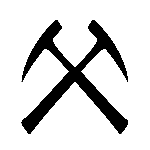20.5: Return of the BIF
- Page ID
- 22762
\( \newcommand{\vecs}[1]{\overset { \scriptstyle \rightharpoonup} {\mathbf{#1}} } \)
\( \newcommand{\vecd}[1]{\overset{-\!-\!\rightharpoonup}{\vphantom{a}\smash {#1}}} \)
\( \newcommand{\id}{\mathrm{id}}\) \( \newcommand{\Span}{\mathrm{span}}\)
( \newcommand{\kernel}{\mathrm{null}\,}\) \( \newcommand{\range}{\mathrm{range}\,}\)
\( \newcommand{\RealPart}{\mathrm{Re}}\) \( \newcommand{\ImaginaryPart}{\mathrm{Im}}\)
\( \newcommand{\Argument}{\mathrm{Arg}}\) \( \newcommand{\norm}[1]{\| #1 \|}\)
\( \newcommand{\inner}[2]{\langle #1, #2 \rangle}\)
\( \newcommand{\Span}{\mathrm{span}}\)
\( \newcommand{\id}{\mathrm{id}}\)
\( \newcommand{\Span}{\mathrm{span}}\)
\( \newcommand{\kernel}{\mathrm{null}\,}\)
\( \newcommand{\range}{\mathrm{range}\,}\)
\( \newcommand{\RealPart}{\mathrm{Re}}\)
\( \newcommand{\ImaginaryPart}{\mathrm{Im}}\)
\( \newcommand{\Argument}{\mathrm{Arg}}\)
\( \newcommand{\norm}[1]{\| #1 \|}\)
\( \newcommand{\inner}[2]{\langle #1, #2 \rangle}\)
\( \newcommand{\Span}{\mathrm{span}}\) \( \newcommand{\AA}{\unicode[.8,0]{x212B}}\)
\( \newcommand{\vectorA}[1]{\vec{#1}} % arrow\)
\( \newcommand{\vectorAt}[1]{\vec{\text{#1}}} % arrow\)
\( \newcommand{\vectorB}[1]{\overset { \scriptstyle \rightharpoonup} {\mathbf{#1}} } \)
\( \newcommand{\vectorC}[1]{\textbf{#1}} \)
\( \newcommand{\vectorD}[1]{\overrightarrow{#1}} \)
\( \newcommand{\vectorDt}[1]{\overrightarrow{\text{#1}}} \)
\( \newcommand{\vectE}[1]{\overset{-\!-\!\rightharpoonup}{\vphantom{a}\smash{\mathbf {#1}}}} \)
\( \newcommand{\vecs}[1]{\overset { \scriptstyle \rightharpoonup} {\mathbf{#1}} } \)
\( \newcommand{\vecd}[1]{\overset{-\!-\!\rightharpoonup}{\vphantom{a}\smash {#1}}} \)

There is an additional chemical sedimentary rock that also appears in some Snowball Earth sedimentary sequences: banded iron formation (BIF). This is cited as evidence of radically altered oceanic chemistry during the Snowball glaciation, and therefore an indirect evidence of extensive sea ice cover.
As we saw in the Archean, the chemical precipitation of banded iron formation is a consequence of anoxic ocean waters. It is a broad generalization that BIFs are an “extinct rock” that “died out” at the Paleoproterozoic / Mesoproterozoic boundary with the build-up of copious free oxygen in the planet’s atmosphere and oceans. But that turns out to be not quite true.
During the Neoproterozoic Snowball Earth glaciations, BIFs make a reappearance in the geologic record. They were “resurrected” because the conditions that allow their formation occurred again, this time due to the Snowball.

Because BIFs are the geologic signature of an anoxic ocean, their reappearance after a long absence is cited as strong evidence that sea ice over of Earth’s oceans was indeed global. That is, they were entirely or almost-entirely sealed off from interacting with the oxygenated atmosphere. Any dissolved oxygen in the oceans was consumed through chemical reactions, but was not replaced by diffusion from the atmosphere. This allowed deep sea black smokers to again permeate ocean water with dissolved iron.
Did I Get It? - Quiz
What rock type is evidence that significant portions of Earth's oceans were anoxic during the Snowball Earth glaciations?
a. cap carbonates
b. turbidites
c. banded iron formations
d. granites
e. evaporites
f. tidal rhythmites
- Answer
-
c. banded iron formations
Why do anoxic ocean waters support the idea of a total planetary freezeover during the Snowball Earth?
a. It suggests that temperatures were too cold for oxygen to be stable as a gas, and instead it formed a liquid.
b. It suggests that the first animals (which were very cool) were sucking all the oxygen out of the oceans.
c. It suggests a lack of gas exchange between the atmosphere and the oceans: blocked by extensive sea ice cover.
- Answer
-
c. It suggests a lack of gas exchange between the atmosphere and the oceans: blocked by extensive sea ice cover.


